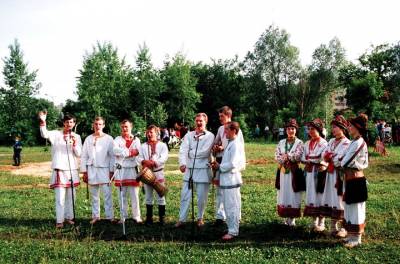languagesUralic (Finno-Ugrian) languages
 , $IMAGE2$, $IMAGE3$ , $IMAGE2$, $IMAGE3$
Classification of the Uralic (Finno-Ugrian) languages, with present numbers of
speakers and areas of distribution (last updated 11 April 2007)
© Tapani Salminen 1994–2007
SaamiSouth Saami? 500Norway, Sweden
Ume Saami? 20Norway (extinct), Sweden
Pite Saami? 20Norway (extinct), Sweden
Lule Saami? 2,000Norway, Sweden
North Saami30,000Norway, Sweden, Finland
Inari Saami400Finland
Kemi Saamiextinct since 1800sFinland, Russia
Skolt Saami300Finland, Russia
Akkala (Babino) Saamiextinct since 2003Russia
Kildin Saami800Russia
Ter Saami? 6Russia
FinnicLivonian1Latvia
Vхro-Seto50,000Estonia, Russia
Estonian1,000,000Estonia and adjacent areas
Vote20Russia
Finnish5,000,000Finland and adjacent areas
Ingrian200Russia
Karelian30,000Finland, Russia
Olonetsian25,000Finland (evacuees), Russia
Lude? 3,000Russia
Veps5,000Russia
Erzya400,000Russia
Moksha200,000Russia
MariWestern (Hill) Mari30,000Russia
Eastern (Meadow) Mari470,000Russia
PermianUdmurt450,000Russia
KomiPermyak
+ Yazva Komi80,000
? 100Russia
Russia
Komi (proper)220,000Russia
Hungarian
+ Csбngу Hungarian14,000,000
? 20,000Hungary and adjacent areas
Romania
MansiNorthern Mansi2,500Siberia
Eastern Mansi? 10Siberia
Western Mansiextinct since 1900sSiberia
Southern Mansiextinct since 1900sRussia, Siberia
KhantyNorthern Khanty? 10,000Siberia
Eastern Khanty? 3,000Siberia
Southern Khantyextinct since 1900sSiberia
SamoyedNganasan500Siberia
EnetsTundra Enets? 20Siberia
Forest Enets? 30Siberia
Yuratsextinct since 1800sSiberia
NenetsTundra Nenets25,000Russia, Siberia
Forest Nenets? 1,500Siberia
SelkupNorthern Selkup1,000Siberia
Central Selkup? 50Siberia
Southern Selkup? 50Siberia
Kamasextinct since 1989Siberia
Matorextinct since 1800sSiberia
The map Geographical Distribution of the Uralic Languages (Finno-Ugrian Society,
Helsinki 1993) is distributed by the Bookstore Tiedekirja. Price 3 euros +p&p.
The original version of the table, prepared at the Department of Finno-Ugrian
Studies of the University of Helsinki, was included in the map legend and sent
to the Linguist List in September 1993. It was later found out that especially
the numbers of speakers of eastern Saami languages had been grossly
overestimated (cf. especially Ter Saami: formerly 500, now 6). Furthermore, the
languages with a very low number of speakers have been assigned a definite
figure (instead of “very few”). The figures for many languages are still not
quite reliable, and it must be remembered that many of the alleged speakers
actually prefer some other language(s) in their daily life.
Other changes are that Vхro-Seto and Estonian, Karelian and Olonetsian as well
as Komi and Permyak are listed separately, and the idioms subsumed under Mari,
Mansi, Khanty, Enets, Nenets, and Selkup are included in the list, as they are
correctly regarded as separate languages rather than “major dialects”. Also
mentioned for the first time are the outlying dialects Yazva Komi and Csбngу
Hungarian, marked with a + sign.
The table only includes the modern names recommended for current usage. Here is
a checklist of old and new names: Cheremis > Mari; Lappish (or Lapp) > Saami (or
Sбmi, both pronounced sah-mee); Ostyak > Khanty; Ostyak Samoyed > Selkup; Tavgi
(or Tavgi Samoyed) > Nganasan; Vogul > Mansi; Votyak > Udmurt; Yenisey Samoyed >
Enets; Yurak (or Yurak Samoyed) > Nenets; Zyryan > Komi (in the narrow sense
excluding Permyak).
Please also notice that Finnic (rather than “Baltic-Finnic” or the like) is the
name of the group of closely related languages including Finnish, and that the
practice of referring to “Finno-Permian”, i.e. all Uralic languages except
Hungarian, Mansi, Khanty and Samoyed, as Finnic should be regarded as obsolete.
Finno-Ugrian can also be spelled as Finno-Ugric, and both variants are currently
used in literature.
|